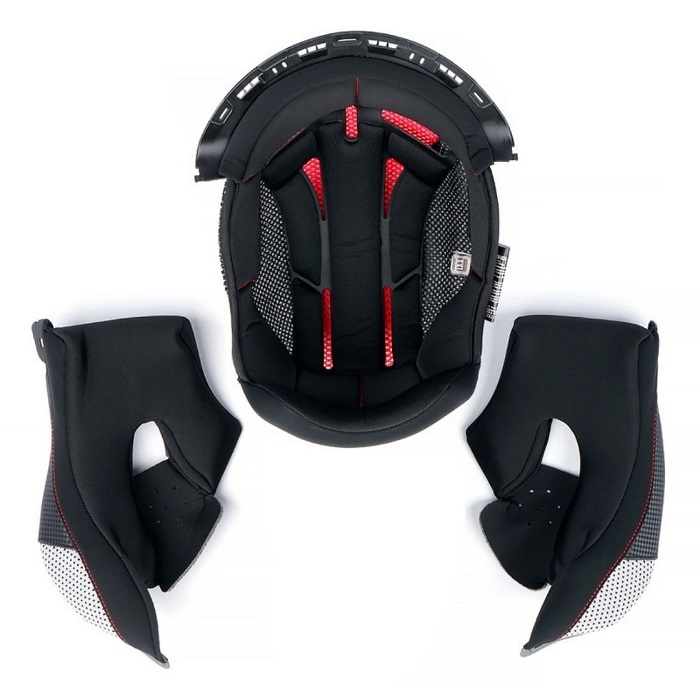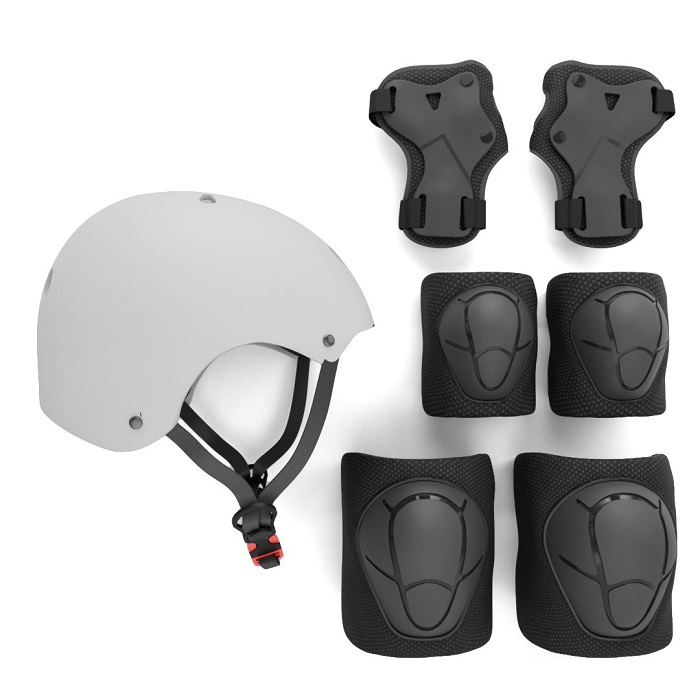Jan 15, 2025
How to Wash Motorcycle Helmet Pads: A Comprehensive Guide
Introduction to Helmet Pad Maintenance
Caring for your motorcycle helmet pads is crucial for both comfort and hygiene. Sweat, dirt, and oils can build up over time, leading to a less pleasant riding experience. Regularly washing helmet pads not only keeps them fresh but also extends their lifespan. In this guide on how to wash motorcycle helmet pads, we’ll walk you through the most effective methods to maintain the cleanliness and integrity of your pads.
Understanding the material and construction of your helmet pads is the first step. This will dictate the best cleaning process, ensuring you don’t damage the material. Most pads can endure a gentle wash, but always check the manufacturer’s recommendations. We’re about to dive into a comprehensive process, starting with the preparation stage. So let’s gear up and ensure that the next time you hit the road, your helmet is as ready as you are.
Preparing to Clean Your Helmet Pads
Before diving into how to wash motorcycle helmet pads, preparation is key. Start by gathering all the necessary supplies. You’ll need a mild, helmet-friendly detergent, a soft cloth or sponge, and access to lukewarm water. Optionally, you might also want a small brush to tackle any stubborn grime.
Read your helmet’s manual. It often contains specific instructions for cleaning the pads. Skipping this step could lead to damage, so always consult the manual first.
Ensure you have a clean workspace. A clutter-free area prevents dirt from getting back onto the pads during the cleaning process. Lay out a towel to place the helmet and pads on. This keeps them from picking up any dirt.
Detach the helmet pads if they are removable. Doing this gently will prevent tearing the material. If they aren’t designed to be removed, check the manual for cleaning tips while they’re still in the helmet.
Removing Helmet Pads for Washing

Once you have prepared your workspace and have your supplies at hand, the next crucial step in learning how to wash motorcycle helmet pads is removing them for cleaning. This part of the process requires careful handling to avoid damaging the pads or helmet.
Follow these steps to remove the pads safely:
- Open the helmet and locate the attachment points of the pads. These are often snaps or velcro patches.
- Gently pull the pads away from their attachments. For snaps, apply a steady pressure until they release. For velcro, peel them off slowly to reduce the risk of tearing the fabric.
- Lay the pads on the clean towel you’ve prepared. This ensures they stay dirt-free during the process.
If your helmet pads are not designed to be removed, refer back to the manual. Look for any specific instructions or tips for how to clean the pads while still inside the helmet. When in doubt, you can use a damp sponge or cloth to dab at the pads, lifting away surface dirt without soaking the material.
Remember to handle the pads softly. Rough treatment might break down the foam or fabric, reducing the comfort and effectiveness of your helmet.
Hand Washing vs. Machine Washing Techniques
When learning how to wash motorcycle helmet pads, you face a choice. You can hand wash or machine wash. Each method has its benefits and risks. Let’s explore both options.
Hand Washing Techniques
Hand washing is gentle and often recommended. Use a mild detergent mixed with lukewarm water. Dip a soft cloth or sponge in the solution. Then, gently scrub the pads with circular motions. Rinse the pads thoroughly with clean water. Avoid twisting or wringing them out, as that can damage the foam. Instead, press the pads between towels to remove excess water.
Machine Washing Techniques
Some helmet pads are machine washable. Check the manufacturer’s label to be sure. If they are, use a gentle cycle and a mild detergent. Place the pads in a laundry bag to protect them. Do not use fabric softeners or bleach. These can degrade the material and affect safety.
Deciding Between the Two
Choose hand washing to reduce the risk of damaging the pads. If you lack time or have multiple sets to wash, machine washing may be more practical. Always follow the manufacturer’s guidelines for the safest and most effective clean. With proper care, your helmet pads will stay fresh and functional for your riding comfort.
Drying Your Helmet Pads Properly
After you wash your motorcycle helmet pads, drying them right is critical. Here’s how to do it.
Avoid Heat Sources
Do not place the pads near heaters or in direct sunlight. Heat can warp or damage the material.
Pat them Dry
Use a clean towel to gently pat the pads. This helps absorb excess water without harming the foam.
Lay Flat to Air Dry
Lay the pads flat in a well-ventilated area. Ensure they are completely dry before reattaching them.
Do Not Wring Out
Never twist or wring the pads to remove water. This could break down the padding and make it less effective.
Check for Dampness
Before reassembling, check the pads for any remaining dampness. They should be fully dry to avoid mildew or bacteria growth.
Proper drying helps keep your helmet pads like new. It prevents material breakdown and keeps the pads comfortable for your rides.
Reassembling Your Helmet After Cleaning

After drying your motorcycle helmet pads, it’s time to put everything back together. Correct reassembly is critical for the comfort and effectiveness of your helmet. Here’s a simple guide to ensure you reattach the pads properly:
- Check the Pads: Ensure they are completely dry. Any moisture can lead to mold or unpleasant smells.
- Position the Pads: Align them with the corresponding areas inside the helmet. Make sure the orientation is correct.
- Attach Gently: For velcro pads, press them firmly in place. For snaps, line them up and push until you hear a click.
- Inspect the Fit: Once attached, press around the pads to check for loose areas. Re-secure any loose parts.
- Try On the Helmet: Wear your helmet to make sure the pads feel comfortable and secure.
Remember to reassemble the helmet slowly and carefully. Rushing can misalign the pads or damage the attachments.
Proper reassembly ensures your helmet remains safe and snug for every ride. Plus, it maintains the structure and longevity of your helmet pads.
Maintaining Helmet Pads Between Washes
Caring for motorcycle helmet pads between washes is as important as the washing process itself. Regular maintenance can keep them in good condition and prolong their life. Here are tips to help you keep your helmet pads fresh:
- Use Helmet Sanitizers: After riding, consider using a helmet sanitizer. This can reduce bacteria and odor.
- Air Out Your Helmet: Always let your helmet air out after use. This prevents moisture from causing mildew.
- Avoid Sharing Helmets: Sharing helmets can increase the transfer of oils and sweat. Try to use your own helmet only.
By following these simple practices, you can keep your helmet pads clean and in good shape between more thorough washes. This not only improves comfort but also ensures your helmet remains a hygienic piece of your riding gear.
Tips for Long-lasting Helmet Pads

To make your motorcycle helmet pads last longer, follow these tips:
- Read Care Instructions: Always check the helmet’s manual before cleaning. It has specific care tips.
- Clean Regularly: Don’t wait for the pads to look dirty. Routine cleaning prevents buildup of grime.
- Avoid Harsh Chemicals: Use only mild detergents. Strong chemicals can damage the pad materials.
- Dry Completely: Ensure pads are fully dry before putting them back. This stops mold growth.
- Store Properly: Keep your helmet in a cool, dry place. Avoid direct sunlight and heat.
- Handle With Care: Be gentle when removing and reattaching the pads to avoid wear and tear.
- Inspect Regularly: Look for signs of wear. Replace pads if they are damaged or too old.
By following these simple steps, you can extend the life of your motorcycle helmet pads. This means you stay comfortable and safe on your rides.
More Details